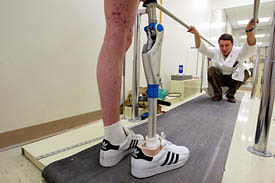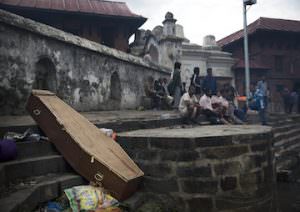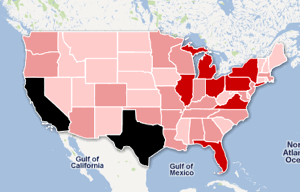Record Injuries Leave Veterans Stranded
Former Truthdigger of the Week Linda Bilmes offers this scathing analysis of America's treatment of its wounded. The Harvard public finance expert writes that for every fatality in Iraq, there are 16 injuries, and doctors and bureaucrats at home are struggling to keep up with the unprecedented -- and underestimated -- surge of wounded soldiers.
Former Truthdigger of the Week Linda Bilmes offers this scathing analysis of America’s treatment of its wounded. The Harvard public finance expert writes that for every fatality in Iraq, there are 16 injuries, and doctors and bureaucrats at home are struggling to keep up with the unprecedented — and underestimated — surge of wounded soldiers.
Your support matters…Linda Bilmes’ Op-Ed in Los Angeles Times:
THE NEW YEAR brought with it the 3,000th American death in Iraq. But what’s equally alarming — and far less well known — is that for every fatality in Iraq, there are 16 injuries. That’s an unprecedented casualty level. In the Vietnam and Korean wars, by contrast, there were fewer than three people wounded for each fatality. In World Wars I and II, there were less than two.
That means we now have more than 50,000 wounded Iraq war soldiers. In one sense, this reflects positive change: Better medical care and stronger body armor are enabling many more soldiers to survive injuries that might have led, in earlier generations, to death. But like so much else about this war, the Bush administration failed to foresee what it would mean, failed to plan for the growing tide of veterans who would be in urgent need of medical and disability care. The result is that as the Iraq war approaches its fourth anniversary, the Department of Veterans Affairs is buckling under a growing volume of disability claims and rising demand for medical attention.
So far, more than 200,000 veterans from Iraq and Afghanistan have been treated at VA medical facilities — three times what the VA projected, according to a Government Accountability Office analysis. More than one-third of them have been diagnosed with mental health conditions, including post-traumatic stress disorder, acute depression and substance abuse. Thousands more have crippling disabilities such as brain or spinal injuries. In each of the last two years, the VA has underestimated the number of veterans who would seek help and the cost of treating them — forcing it to go cap in hand to Congress for billions of dollars in emergency funding.
The VA system has a reputation for high-quality care, but waiting lists to see a doctor at some facilities now run as long as several months. Shortages are particularly acute in mental health care. Dr. Frances Murphy, the VA’s deputy undersecretary for health, recently wrote that some VA clinics do not provide mental health or substance abuse care, or if they do, “waiting lists render that care virtually inaccessible.”
[…]At the same time, wounded veterans trying to obtain disability checks are being tied up in a bureaucratic nightmare. The Veterans Benefits Administration has a backlog of 400,000 pending claims — and rising. Veterans must wait from six months to two years to begin receiving the money that is due to them while the agency plods through paperwork. The staff eventually helps veterans secure 88% of the benefits they ask for — but in the interim, thousands of veterans with disabilities are left to fend for themselves.
The situation is about to go from bad to worse. Of the 1.4 million service members involved in the war effort from the beginning, 900,000 are still deployed on active duty. Once they are discharged, the demands for medical care and counseling will skyrocket, as will the number of benefit claims. The Veterans for America organization projects that VA medical centers may need to treat up to 750,000 more returning Iraq and Afghan war veterans and that half a million veterans may visit the Vet Centers.
Independent journalism is under threat and overshadowed by heavily funded mainstream media.
You can help level the playing field. Become a member.
Your tax-deductible contribution keeps us digging beneath the headlines to give you thought-provoking, investigative reporting and analysis that unearths what's really happening- without compromise.
Give today to support our courageous, independent journalists.





You need to be a supporter to comment.
There are currently no responses to this article.
Be the first to respond.